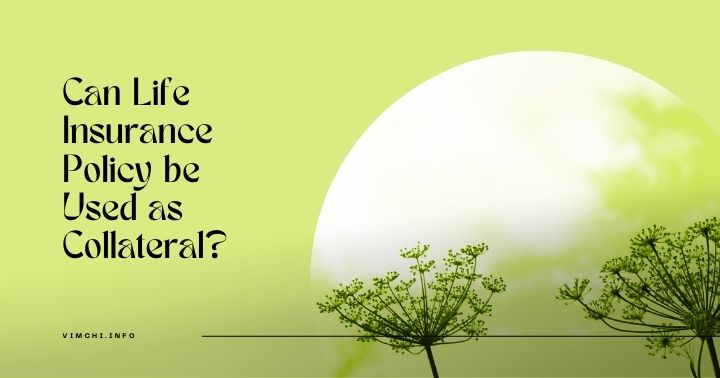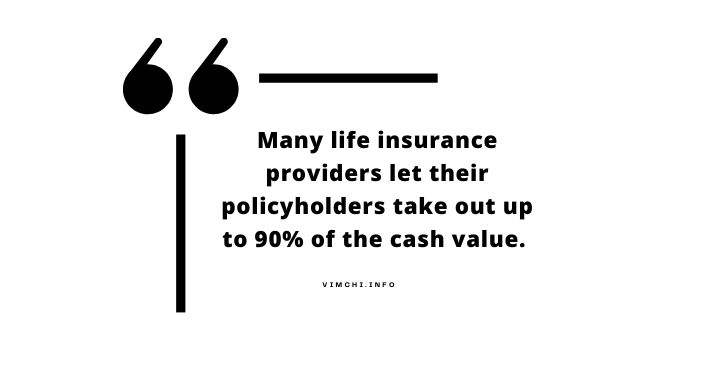
Everyone needs money. You need it to launch a business or for another purpose. If you don’t have enough savings, you will have to borrow some money to meet your goal.
One of the unexpected money sources is your life insurance policy. You can use it as a collateral assignment. So, yes, life insurance can be used as collateral.
What is the Arrangement When Life Insurance Policy is Used as Collateral?
It depends on your life insurance carrier. Generally, it is a lien against the proceeds of your policy.
In that case, if you die before you paid off your loan, your lender will first get a portion of the death benefit to pay off your outstanding loan balance. If there’s still money left, it will be paid to your beneficiaries.
How it works is straightforward. If something happens to you, there is less risk for the lender.
However, the use of your policy as collateral for a loan is different from borrowing money from your policy.
When you borrow from your life insurance policy, you need permanent life insurance. Although you are borrowing from yourself in this situation, it comes with potential drawbacks.
That is, if you don’t return the cash value from the policy, the death benefit will be reduced. You could also face higher premiums if you use the investment returns of the cash value to pay the premium costs.
Furthermore, if you don’t pay back your loan, the lender will have the first claim to the death benefit.
When Would You Consider Your Life Insurance Policy as Collateral?
The most common reason people use their life insurance policy as collateral is when they need to launch a business. Many entrepreneurs know that if their savings have been used up for their ventures, they might not have enough sources to tap.
A failed business venture might not leave tangible assets for the lender to repay their losses.
Thus, if you die before your business takes off, your lender will be stuck with your loan which will never be paid.
That’s why many lenders would choose a life insurance collateral assignment so that they still have something to hold on to when you die.
When Can You Take Out a Loan Against a Life Insurance Policy?

Most permanent life insurance policies have a cash value component. Over time, the cash value accumulates. When that happens, you can borrow against it.
Sadly, you can’t borrow money from your policy right away. Your insurer has guidelines regarding borrowing against your policy. The procedures will prevent you from taking out a loan too early.
Often, it takes 5 years for the cash value to reach a certain point that lets you borrow against it. However, it still depends on the type of policy you purchased.
If the value is tied to the market, it could grow faster than if your policy grows at a fixed rate.
To borrow money against your life insurance, you will have to fill out a form to indicate that you want to transfer the money. Once the loan is approved, you can get the funds in a few days.
How much you can borrow will depend on your provider. Many life insurance providers let their policyholders take out up to 90% of the cash value.
The best thing about taking out a loan against your policy is that you don’t have a specific time frame as to when you need to pay it back. But you must remember that interest may compound over time.
And if you die before you pay back the loan, the total outstanding loan debt will be deductible from the death benefit.
What if the outstanding debt amount is more than the benefit your loved ones will receive? It would mean that your beneficiaries will never get to receive any benefit from your life insurance.
Pros of Borrowing Against Your Policy
One of the attractive features of borrowing against your life insurance policy is that you don’t have a specific time frame when paying back your loan.
You can pay it back whenever you want.
The flexibility is a good option if you don’t want the repayment terms of a bank.
It is also faster to take out a loan against your policy than when you borrow money using the traditional method.
The Cons
But there are disadvantages of borrowing against your policy. The biggest disadvantage is that the amount you borrow will be deducted from the benefit. That is if you were unable to pay off your debt before you die.
Furthermore, you need to pay back compound interest over time. The interest rate is not as high as a traditional bank loan. If you don’t pay back, it can still add up over time.
Is a Life Insurance Policy an Asset?
It depends on the life insurance. If you have permanent life insurance, you may consider it a financial asset.
The reason for this is that it can build cash value. You can also convert it into cash.
Most permanent life insurance policies can build cash value over time. The amount accumulated will depend on your plan.
Thus, you can use the accumulated cash value when calculating your net worth.
The main goal of having life insurance is to ensure that your loved ones will thrive upon your death. Permanent life insurance can also offer benefits that are similar to IRAs, mutual funds, and other long-term investments.
In that case, it can provide you with options that let you build a diversified wealth management portfolio.
Life Insurance as a Strategic Wealth Management Plan
When you retire, your permanent life insurance can be an asset to enhance your retirement income. In other words, it can be an additional stream of income when necessary.
There are so many benefits of having life insurance. If you need money to start a business, you can use it as collateral. If you wish to know more about whether or not a life insurance policy is taxable, please visit here.
Speak Now ... Or Forever Hold Your Peace